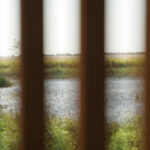- Current Events Nebraska Rejects Winner-Take-All Proposal
- Citizenship Voting Under Age 18
- Citizenship Citizenship in Action
- Democratic Party Biden’s and Trump’s Recent Primary Results
- Elections Trump and Biden Win South Carolina and Michigan Primaries
- Democratic Party Trump and Biden Win Big in Early February Contests

Kennedy Retires from Supreme Court
Last week, Justice Anthony M. Kennedy announced his upcoming retirement from the United States Supreme Court. Here, Election Central takes a look at Kennedy’s long and important career, and examines how his departure could affect the future of our country.
Who Is Justice Kennedy?
Born in Sacramento, California in 1936, Kennedy graduated from Stanford University and received his law degree from Harvard Law School. He went on to become a federal judge, and was appointed to the Supreme Court by President Ronald Reagan in 1988.
Related Link: Learn more about the current Supreme Court justices.
In a Court that is sharply divided politically, Kennedy–whose history of rulings shows a strong conservative view of government responsibilities and legal interpretation–has long held the very critical middle ground. Because of this, he was referred to as the “median justice.” He was also a “swing voter,” meaning that he voted with Republicans sometimes, and with Democrats others. For example, he sided with liberal views on gay rights, abortion, and the death penalty. But he also agreed with conservatives opinions about gun rights and corporate spending in elections. This led many people to consider Kennedy the most powerful man in America, as he was often the tiebreaker on these critical and controversial legal issues.
Why Is His Retirement So Important?
Any time a Supreme Court justice retires, it’s a significant political event. That’s because once appointed, Supreme Court justices don’t have to run for re-election, like a senator or even a president does. Rather, they are appointed for life and can hold their position in government for as long as they wish. This means that they usually serve for decades, often for far longer than the president who originally appointed them.
It’s also important because presidents have the power to appoint justices, and so they tend to choose ones who share their political belief system. In other words, a conservative president will likely choose a conservative judge, and a liberal president will choose a liberal judge. In this case, because Trump is a conservative president, it is almost guaranteed that he will choose a conservative justice. (Trump has already appointed conservative-leaning Justice Neil Gorsuch to fill the seat vacated by Antonin Scalia.) This will change the current balance of the Court. Instead of having four conservative justices, four liberal ones, and one swing voter, there may then be five conservatives and four liberals. Such an ideological shift could possibly threaten issues such as gay rights, abortion, and gun safety legislation if legal challenges around these issues come before the Supreme Court in the future.
What’s Next?
Trump has announced that he will appoint a new justice as soon as next week. Here’s how the process is likely to unfold: Trump has already promised his supporters that he will appoint a conservative justice to Kennedy’s seat. The Senate will then have the job of confirming (or not confirming) his choice. This will touch off a long and hotly-debated battle in the Senate. Eventually–because the seat can’t stay vacant forever–one of Trump’s nominees will be successfully appointed. Whoever he or she is will influence the Court–and the country–for decades to come.


